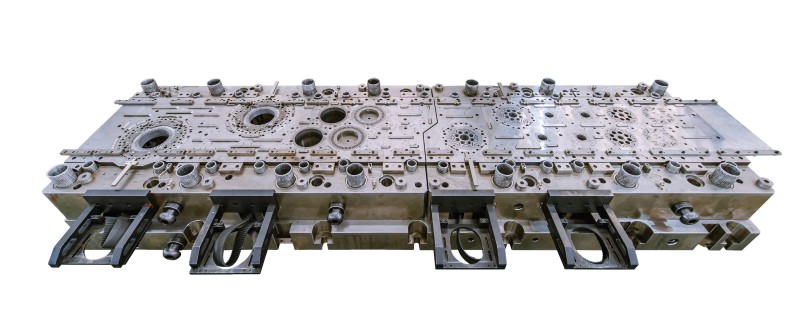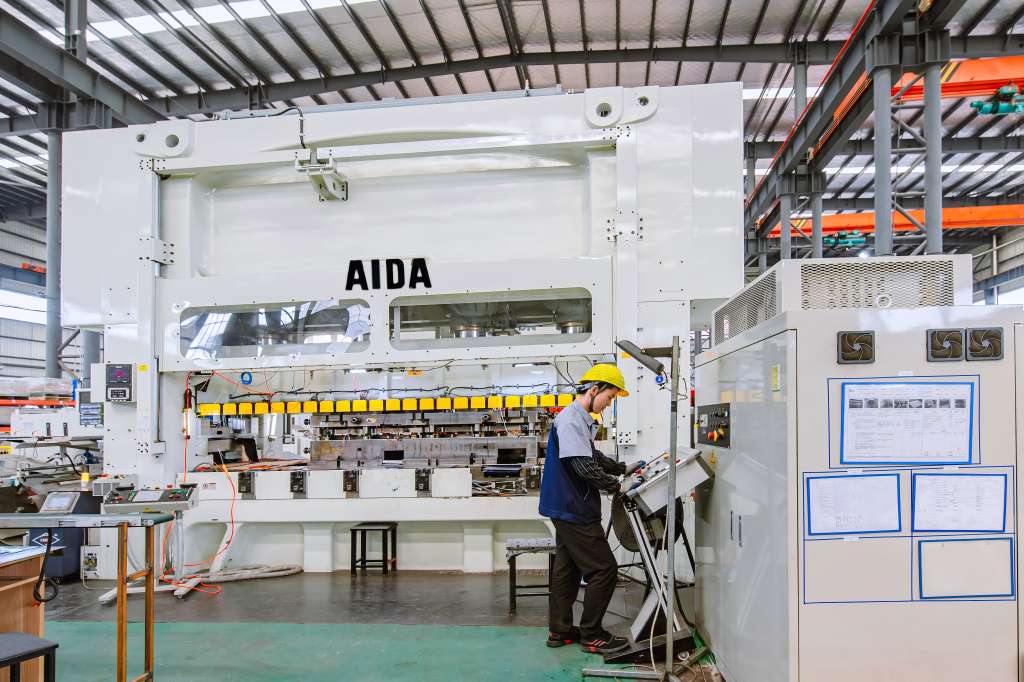In motor manufacturing, efficiency, precision, and cost savings are crucial. Recent advancements, such as automatic stacking and riveting progressive dies, are revolutionizing stator and rotor core production, offering faster production, reduced errors, and significant cost savings.
The Shift Toward Automation in Motor Manufacturing
Motor core production has been labor-intensive, with manual stacking and riveting causing inconsistencies, delays, and higher costs. To address this, manufacturers are adopting automation to streamline operations and meet rising demand in industries like EVs, renewable energy, and robotics.
Automating stator and rotor core production boosts efficiency by eliminating manual labor in stacking and riveting, resulting in faster cycle times, better consistency, and lower costs.
Understanding Automatic Stacking and Riveting Progressive Dies
The process of automatic stacking and riveting progressive dies involves the integration of several advanced technologies to automate key steps in core production:
- Progressive Die Stamping: The stamping process is carried out in several stages, with each pass of the die shaping the material progressively. This results in highly accurate motor cores that meet the tight specifications required for efficient motor performance.
- Automatic Stacking: After the material is stamped, the laminations must be stacked into a precise arrangement. In traditional methods, this process requires manual labor to ensure proper alignment. With automatic stacking, the laminations are precisely fed into position by a robotic system, improving alignment accuracy and speeding up the process.
- Riveting Mechanism: The entire core is then formed by riveting the laminations together. Automation ensures that the rivet placement is precise and secure, reducing the chances of misalignment and ensuring the structural integrity of the motor core.

Key Benefits of Automatic Stacking and Riveting Progressive Dies
Improved Production Speed
One of the most immediate benefits of automating the stacking and riveting processes is a significant reduction in production cycle times. Before automation, the entire production process could take as long as 8-10 minutes per unit. By incorporating automatic systems, manufacturers can cut production time down to 5-6 minutes per unit.
For instance, a manufacturer previously producing 200 stator cores per day can now achieve 400 cores per day with the same workforce, a remarkable 100% increase in production capacity.
| Process | Manual Time (per unit) | Automated Time (per unit) | Time Saved (per Unit) |
| Stamping | 3 minutes | 1 minute | 2 minutes |
| Stacking | 4 minutes | 1 minute | 3 minutes |
| Riveting | 2 minutes | 1 minute | 1 minute |
| Total Cycle Time | 9-10 minutes | 5-6 minutes | 4-5 minutes |
This reduction in cycle time not only improves output but also reduces energy consumption per unit, further lowering production costs.
Enhanced Product Quality and Consistency
Precision is a critical factor in motor core production. The quality of the core directly impacts the motor’s efficiency and performance.
Automatic stacking and riveting systems ensure that each lamination is perfectly aligned and that rivets are securely placed, leading to a more uniform and consistent product. Manufacturers who have implemented these systems report a significant reduction in defects, with quality improvement rates of up to 90%.
Data from industry leaders show that the rate of misalignment errors in lamination stacking has decreased from 5% with manual processes to just 0.5% with automation. Similarly, riveting placement errors have fallen by 95%, ensuring that each motor core meets strict performance standards.
| Quality Metric | Manual Process | Automated Process | Improvement (%) |
| Lamination Alignment Error | 5% | 0.5% | 90% |
| Rivet Placement Error | 4% | 0.2% | 95% |
| Product Rework Rate | 8% | 1% | 87.5% |
These improvements in quality contribute to a reduction in product rework rates, which have dropped significantly, further enhancing operational efficiency.
Lower Labor Costs
Automating the stacking and riveting processes results in substantial labor savings. Traditional manual labor required a team of workers to manage the stacking and riveting stages.
With automation, the need for manual intervention is greatly reduced, allowing manufacturers to allocate workers to more complex tasks, such as machine maintenance, quality control, and troubleshooting.
Following the implementation of automated technologies, manufacturers report labor cost savings of up to 30%. For example, a company with 10 workers performing manual stacking and riveting may now require only 4 workers to oversee the automated process, resulting in significant savings.
Reduced Material Waste
In traditional core production, material waste due to misalignment, defects, or human error was a common issue. Manual stacking and riveting could lead to wasted laminations, increasing material costs. With automation, material handling is much more precise, resulting in less scrap material and lower raw material costs.
For example, an automated system can reduce material waste by up to 15%, which can save manufacturers thousands of dollars annually in raw material costs. These savings will only increase as long as businesses keep streamlining their production lines.
Return on Investment (ROI)
Although the initial investment in automatic stacking and riveting progressive dies can be significant—typically between $500,000 to $1 million—many manufacturers see a full return on their investment within 18 to 24 months.
The combined benefits of improved production speed, higher quality, reduced labor costs, and lower material waste contribute to substantial savings that outweigh the upfront capital expenditure.
One manufacturer reported a return on investment (ROI) in just 20 months, citing a combination of increased throughput and lower operational costs.
Real-World Case Study: The Impact on Production
A prominent motor manufacturer integrated automatic stacking and riveting progressive die into their production process two years ago. Before automation, they were producing 400 stator cores per day, with a defect rate of 10%.
After implementing the new system, their output increased to 800 cores per day, and the defect rate dropped to just 2%. These improvements resulted in a 25% reduction in overall production costs, with the company saving $300,000 annually on labor and material costs.
This case study highlights the real-world impact of these advanced technologies on motor core production, demonstrating that automation is not just a theoretical concept but a proven solution with tangible benefits.
Future Trends and the Road Ahead
There will be a greater need for effective, premium motor cores as the market for electric vehicles (EVs) and renewable energy sources grows.
The use of automatic stacking and riveting progressive dies is expected to become more widespread, with further advancements in automation, artificial intelligence (AI), and machine learning likely to further enhance production processes.
In the future, manufacturers may see even greater efficiencies through the integration of these technologies with Industry 4.0 systems, enabling real-time monitoring and predictive maintenance, thus further reducing downtime and enhancing production quality.
Conclusion
Automatic stacking and riveting progressive dies have transformed stator and rotor core production, offering benefits like faster production, higher precision, lower labor costs, and reduced waste.
Automation is essential to preserving competitiveness and product quality as the demand for electric motors rises. Investing in automation is a strategic move with long-term rewards.



